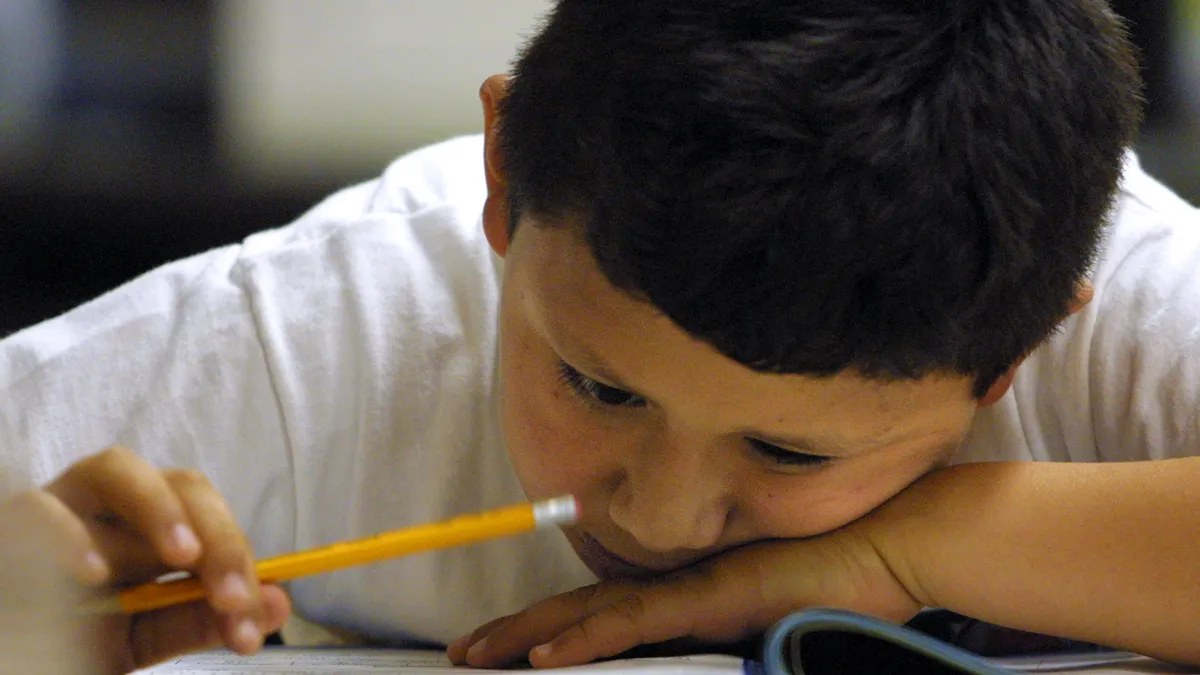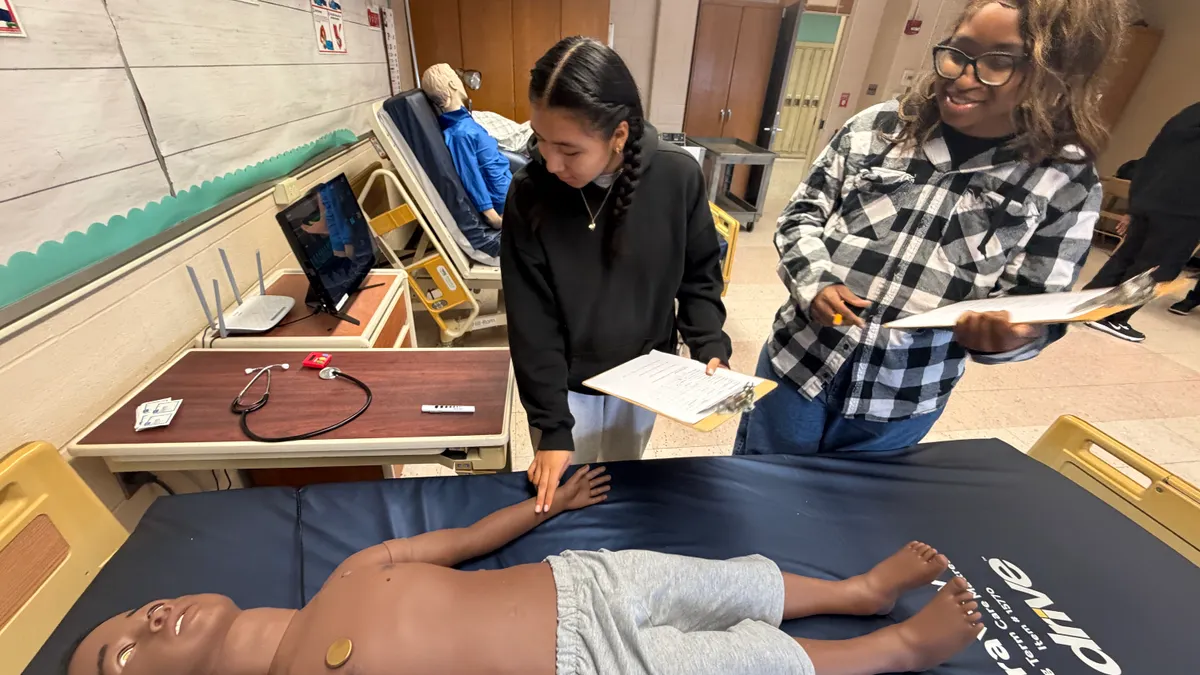Assessment results from last school year show wider variations in students' performance than before the pandemic, pointing to the reality that in many classrooms right now, teachers are supporting a greater diversity of student academic needs, according to two recently released reports.
That variability is largely due to the test scores for lower-achieving students falling at a higher rate than the declines for high-achieving students, according to an analysis from NWEA, a nonprofit research and educational services organization. Researchers looking at pre- and post- pandemic assessment results found math and reading test scores from spring 2022 had wider variation between lower and higher testing results compared to those from spring 2019.
For example, 3rd grade reading test scores for the high-achieving students — those in the 90th percentile — dropped by only 0.3 points from 2019 to 2022. Test scores for low-achieving students in the 10th percentile, meanwhile, fell by 5.2 points.
"There's no question that the pandemic's disruptions to learning were profound, but the level and depth of that impact was not equal across all students," said Karyn Lewis, a co-author of the report and director of the Center for School and Student Progress at NWEA, in a statement.
Renaissance, a company that provides assessment, reading and math assessments, has been analyzing student performance data throughout the pandemic. The company's most recent study shows greater variations than those observed earlier in the pandemic, said Gene Kerns, vice president and chief academic officer.
Renaissance's new data analysis shows higher overall academic growth over the 2021-22 school year for early and middle grades. However, variations were seen at certain grade and subject levels, and some high school grades showed slower declines. For example, 10th graders did better in math but declined in reading.
"Honestly, it's harder and harder to tell the story succinctly," Kerns said.
What the data says
For the NWEA analysis, researchers compared scores from the spring 2022 MAP Growth assessments from 8 million students in grades 3-8 with a sample of same-grade test-takers in 2019. NWEA administers the MAP Growth assessments.
Researchers also looked at the performance over three COVID-19-interrupted school years (2019-22, 2020-21 and 2021-22). The data included 1 million of the same students whose pre-pandemic assessment scores from between 2016-17 and 2018-19 put them at the lower and higher ends of the achievement spectrum. Researchers wanted to study how achievement gains during the pandemic compared with pre-pandemic trends for students at the extremes.
What researchers found — for both reading and math and across grades — is that the average scores of lower-achieving students decreased more than those for higher-achieving students. This suggests historically low-achieving students fell further behind academically during the pandemic, the report said.
"As we urgently work toward recovery, continuing to understand which students were harmed the most and the magnitude of their unmet needs will keep the focus on them as a priority to ensure appropriate interventions are provided," Lewis said.
In looking at the pandemic’s impacts on high-achieving students, NWEA researchers noticed that the highest-achieving group now has fewer students of color.
That could set back efforts to make gifted and talented programs more inclusive and diverse. Using local norms to gauge achievement and rigor, rather than national benchmarks, may help to increase the number of students with diverse backgrounds and experiences identified for gifted and talented programming, the report said.
The Renaissance study looked at interim K-12 math, reading and early literacy testing results from its Star Assessment of 7.9 million students from the end of the 2021–2022 school year. Those results were compared with how students performed at the end of the 2020-21 school year.
Performance was generally lower in spring 2022 than the year before, except for certain elementary grades. High school grades saw the largest declines in performance. Growth rates over the 2021-22 school year were generally higher, but some high school grades saw declines in growth.
"What we found was there are a lot of areas where things have leveled off. So what that means is the plane is not losing altitude anymore. That's great. High school would be an area where we're still losing altitude," Kerns said.
More diversity of student needs
Although testing by its very nature reveals differences among students, the wider variations during the pandemic should put administrators and teachers on alert that students in a given classroom may have an even greater range than usually experienced before, said both reports.
In pre-pandemic times, a typical 5th grade classroom could include students working at seven different grade levels, from 3rd grade to high school. Now, that variability has likely expanded.
“Purchasing a new tutoring or curricular solution isn’t enough; leaders must make the deep investments in teachers that enhance their knowledge and skills, and create the sustained conditions that make classrooms equitable places to learn," said Chase Nordengren, principal research lead for effective instructional strategies at NWEA, in a statement.
NWEA recommends increased and updated professional development and instructional resources that can support teachers' efforts to serve a greater range of student needs.
Kerns from Renaissance said teachers should continue using formative assessments to verify that instruction and interventions are helping students progress. The company also recommends prioritizing instruction on skills that are most essential for student progress.
"Keep looking at the data and responding," he said. "We've got to keep looking at the overall [results] and then also disaggregating because different subgroups of kids are having differing levels of lingering impact."





















